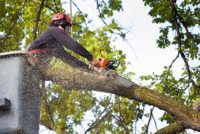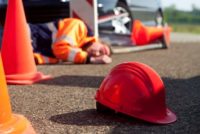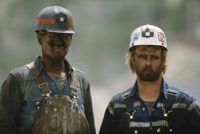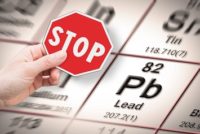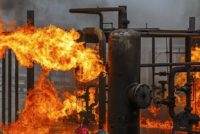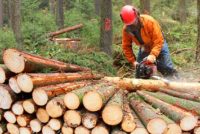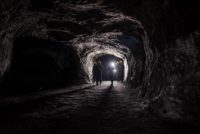Tree care operations are among the most hazardous in the U.S. workforce. Nationally, landscape service workers make up less than 1 percent of the workforce but constitute 3.5 percent of all workplace fatalities, according to the Washington State Department of Labor and Industries, and 75 percent of all fatalities are related to tree removal or […]
Struck-by object is one of OSHA’s Construction Focus Four topics (along with falls, electrocution, and caught-in-between), collectively the four hazards that year-to-year result in more than half the fatalities in the construction industry.
It’s one of the most instantly recognizable hazards when you step onto many worksites—noise. A lot of us tend to think, well, just use some PPE, and that’s that. However, there’s much more to a hearing conservation program than meets the eye, or, shall we say, meets the ear. What are some of the things […]
Remarkably, coal workers’ pneumoconiosis (CWP), better known as black lung disease, afflicting coal miners in Appalachia appears to be on the rise, reports the National Institute for Occupational Safety and Health (NIOSH).
OSHA reports that Recommended Practices for Safety and Health Programs is one of its most popular guidance publications. The agency originally published this document in 1988 and issued the first update in October 2016. In that revision, OSHA stated that much had changed over the preceding 28 years in the nature of work, conditions in […]
Worker safety advocates, scientists, and some state OSHA authorities have been contending for years that OSHA’s permissible exposure levels (PELs) for lead in the workplace are inadequate to protect workers from the multiple adverse health effects associated with the metal.
Explosions and fires at oil refineries and chemical facilities are far more likely to occur during equipment start-ups and shutdowns, notes the U.S. Chemical Safety and Hazard Investigation Board (CSB) in a recent Safety Digest. Workers are typically the first line of victims when such incidents occur. In the Digest, the CSB describes three start-up/shutdown […]
Workplace safety is an important goal in any industry, but as every EHS pro knows, promoting and achieving safety is more challenging in some industries than in others. What are the most dangerous jobs in the United States?
Q: Is the wearing of shorts in a parts warehouse permitted by OSHA?
In a notice, the Mine Safety and Health Administration (MSHA) says it is beginning a retrospective study on how effective its 2014 final rule has been in lowering the exposure of underground and surface miners to respirable coal dust.

